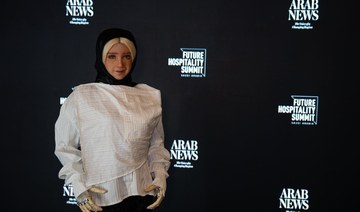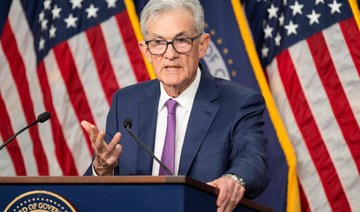DUBAI: Fancy working from home in a poolside villa, bathed in year-round sun?
Prime Dubai properties have been snapped up in the past few months by buyers taking advantage of decade-low prices, easy financing and an economy open for business despite the pandemic.
Sales of luxury villas, sea-view apartments and second-hand family houses have jumped, re-energizing a property market that saw a sharp fall in activity at the height of the pandemic and had been in a five-year slump prior to that. But with rents still falling and oversupply weighing, the road to recovery will be long for one of the emirate’s main economic engines.
Dubai’s economy — reliant on trade, tourism and its international reputation as a regional hub for business services — was hard hit by the COVID-19 pandemic last year as firms slashed jobs. Many foreign workers, needed to support demand in a real estate sector that contributed 7.2 percent of GDP in 2019, left.
Yet market activity has picked up in the last six months, after lockdowns and curfews were lifted, estate agents say, helping to stabilize prices for family villas and high-end beach and golf course properties.
Realtor Matthew Bate, whose agency Nest deals mainly in high-end villas, says business has become much busier in the past few months as nationals, residents and foreign visitors took the opportunity to buy.
“We did have some distressed assets coming out of the COVID-19 lockdown. Now I would say we are back up into early 2020, 2019 prices,” he said.
While much of the world re-imposed coronavirus restrictions this winter tourist season, Dubai welcomed visitors and the UAE started one of the world’s fastest vaccination campaigns.
“We had a huge influx of tourists ... it exposed a lot of people to Dubai ... The last 2-3 clients we had, dealing with properties over 15 million AED ($4.08 million), they have properties in New York, London and they are now looking at Dubai,” he said.
Still, while prices of high-end villas have stabilized, apartment prices as a whole in the emirate were mostly still falling in February, a price index by ValuStrat shows.
S&P credit analyst Sapna Jagtiani does not expect Dubai’s real estate market to recover to pre-pandemic levels until some time next year.
“Prices are down by 40-50 percent from the last peak (2014) ... this is why we think a recovery in prices to similar levels will be slow and long,” she said.
Rents at the end of 2020 were about 5-10 percent lower than the market’s last trough a decade ago, Jagtiani said.
Even before the pandemic, the long-term economic trend in the United Arab Emirates had been sluggish since the 2014-2015 oil price crash, said Christopher Payne, chief economist at Peninsula Real Estate, a UAE-based investment and research company.
“Lower oil prices are also feeding through to population numbers; you have to cut costs, people get laid off and people leave the country,” he said.
Low prices, relaxed mortgage conditions and a desire for more spacious properties as the pandemic jump-started working from home, have driven secondary market sales transactions in Dubai to record highs every month since September, said Lynette Abad of Property Finder Group, a real estate search portal.
The dominance of secondary transactions marks a fundamental market shift for Dubai. Off-plan sales from new projects used to dominate, but several developers slowed or halted new projects last year. They included Emaar Properties’ Dubai Creek Harbor, a luxury development of waterfront apartments designed to house 200,000 people, sources told Reuters last April.
Dubai’s hosting of the Expo 2020 world fair, due to take place in October after being postponed because of the pandemic, as well as a recent series of measures to relax long-term visa and citizenship rules, should boost market sentiment in the medium- to long-term, analysts say. The recent normalization of the UAE’s ties with Israel and a thawing of relations with Qatar are also seen as positives that could boost investment in Dubai and its property market, they say.
But despite optimism over rising demand for certain sectors of the market, oversupply remains a key problem.
For years supply has outpaced demand for new houses and apartments in a market where most of the population are foreigners.
“The supply-demand imbalance is likely to worsen over the course of 2021. This will result from rising levels of supply, particularly over the next 12-18 months, and increasingly curtailed demand as businesses and employees navigate through downsizing and ultimately repatriation of unemployed workers,” Asteco, a real estate services company, said in a report.
New supply forecasts for 2021 vary. Real estate consultancy Knight Frank sees “historic levels” of new supply coming online this year, at around 83,000 residential units in Dubai, up from 35,808 last year, while Asteco expects around 41,500 this year, up from its estimate of around 34,050 in 2020.
“Some market indicators will look better in 2021 ... (like) growth in mortgage buying in Dubai, etc. ... But will it trigger recovery? Maybe not by itself. We think the main aspect that would trigger recovery is cutback on supply,” Jagtiani said.
Cutbacks to new projects have hurt developers’ bottom lines. Emaar, Dubai’s largest listed developer, reported a 58 percent fall in net profit last year and rival DAMAC Properties made a net loss of 1.04 billion dirhams ($283.16 million).
“There are multiple stresses on developers, mainly to manage liquidity and cash flow while making timely deliveries, additionally pre-sales may not be very encouraging in 2021 and mostly you’ll see reduced profit and higher leverage,” Jagtiani said.
A wave of restructurings swept the industry and some developers went bust in the years following the 2008 financial crisis.
Signs of further restructuring and consolidation are emerging, including Emaar planning a takeover and delisting of its malls unit, and state-linked Meraas Holding being brought under the investment vehicle of the emirate’s ruler, Dubai Holding.
Bigger players with links to the emirate or its rulers will likely be able to weather the storm, with access to cheap land and prime locations.
“Developers with stronger balance sheets will have higher chances of survival than smaller ones as market share will shift to developers offering the most flexible payment plans. It is difficult for small developers to address affordability concerns,” Mohamad Haidar of Arqaam Capital said.
Buyers return but Dubai real estate faces long road to recovery
https://arab.news/cy4tx
Buyers return but Dubai real estate faces long road to recovery
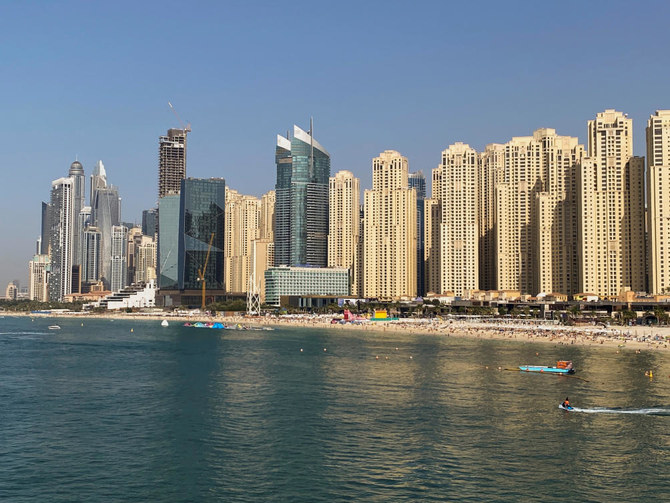
- Shift in demand from off-plan to completed
- Brokers see pick up in sales and leasing activity
Alvarez & Marsal opens regional headquarters in Riyadh
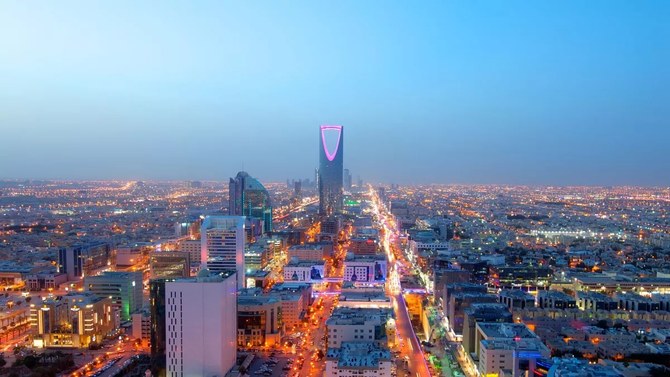
RIYADH: Underscoring international confidence in the Saudi economy, global consulting firm Alvarez & Marsal has become yet another company to have opened its regional headquarters in Riyadh.
In a press statement, the US firm stated that the inauguration of the new regional headquarters underscores its commitment to contributing to the country’s transformation agenda.
“As the company continues to deepen its roots in the country, with expertise across various sectors — from banking and tax to healthcare and disputes and investigations — this strategic move aims to leverage local insights in the Kingdom to drive sustainable growth and innovation.” the company said.
Additionally, A&M announced that it has included 13 skilled Saudi graduates in the inaugural batch of its Bidayah Graduate Program.
The company stated that these candidates were selected from a competitive pool of applicants, describing the chosen individuals as representing the bright future of the Kingdom and reflecting the potential that A&M sees in local talent.
James Dervin, managing director of A&M in the Middle East and co-head in the region, stated that the program is designed to develop the next generation of execution-focused leaders in management consulting. It is guided by the A&M principles of leadership, action, and results.
“Over the course of 12 months, participants will undergo rigorous training, engage in live project work, and receive mentorship from seasoned industry experts,” he said.
Dervin added: “Coupled with the incorporation of our regional headquarters in Saudi Arabia, the program underscores A&M’s commitment to investing in the professional development of Saudi nationals and aligning with the Kingdom’s ambitious Vision 2030,”
He further noted that the new graduates will have a significant, positive impact on his firm and the clients it serves.
Commenting on the close alignment of A&M’s global brand with the local market dynamic in Saudi Arabia, Bryan Marsal, A&M’s CEO and co-founder, said: “The all-encompassing nature of the Saudi Arabian transformation is driving significant demand for A&M’s distinctive ‘get-stuff-done’ brand of services — for our ability to fix problems, our ‘skin in the game’, and our freedom from audit conflicts.”
With over 9,000-strong workforce across six continents, A&M generates tangible results for corporations, boards, private equity firms, law firms, and government agencies grappling with intricate challenges, according to its website.
More than 180 major global companies and organizations have already established regional headquarters in the Saudi capital. These include Apple, Microsoft and Alibaba, as well as the IMF, IBM, and Google.
Other notable entities on the list include German consultancy firm TUV Rheinland, PwC Middle East, Aramex and Amazon.
UAE banks’ aggregate capital, reserves exceed $136bn
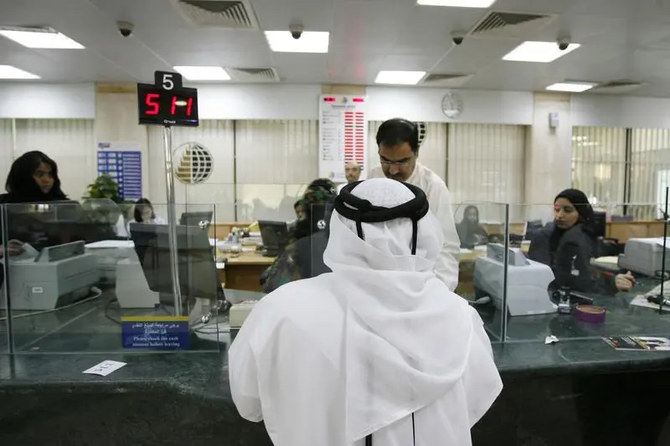
RIYADH: UAE-based banks’ aggregate capital and reserves reached 501.5 billion dirhams ($136 billion) at the end of February, up 14.4 percent year-on-year, according to new data.
The latest statistics from the Central Bank of the UAE showed that on a monthly basis, the total capital and reserves grew 0.95 percent, reflecting an increase of approximately 4.7 billion dirhams, according to the Emirates News Agency, also known as WAM.
This rise in figures falls in line with the central bank’s goal of enhancing monetary and financial stability in the country.
Moreover, the data indicated that national banks accounted for around 86.5 percent of the aggregate capital and reserves of banks operating in the UAE. At the end of February, they recorded a total of 433.7 billion dirhams, an annual rise of 14.6 percent.
On the other hand, the share of foreign banks settled at 13.5 percent, hitting 67.8 billion dirhams at the end of the same month, reflecting a 13.2 percent surge compared to the same period a year earlier.
Furthermore, at the end of February, the total capital and reserves of banks operating in Dubai alone stood at 246.4 billion dirhams, logging a year-on-year growth of 15.1 percent.
Additionally, banks operating in Abu Dhabi recorded around 217 billion dirhams, up 13 percent from the corresponding period in 2023.
Meanwhile, the cumulative capital and reserves of banks operating in other emirates combined reached an estimated 38.1 billion, reflecting a 15.5 percent climb in comparison to the same period a year prior.
In March, a top executive at Roland Berger said that UAE bank branches were witnessing the highest revenues in the region, amounting to $18.6 million per branch.
This was driven by the nation’s digital transformation, which enabled financial institutions in the Gulf Cooperation Council to reduce the number of banking branches by 328 within three years, Saumitra Sehgal, the global consulting firm’s head of financial services in the Middle East, told WAM, at the time.
Sehgal also pointed out at the time that the number of bank branches across GCC nations decreased from 4,067 at the end of 2019 to 3,739 by December 2022.
He further noted that banks in the UAE saw the highest number of outlets merge and reduce with the support of digital transformation between 2019 and 2022.
Saudi financial robo-advisory firm Abyan Capital secures $18m in funding
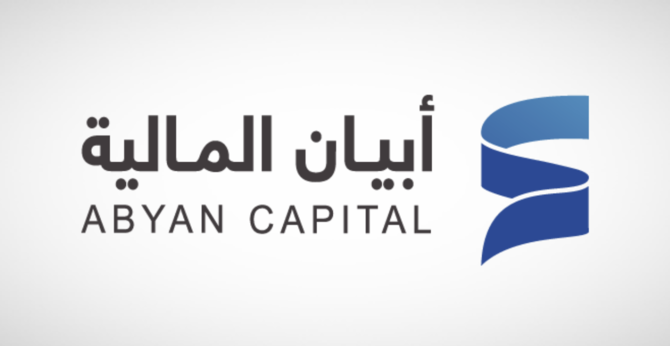
RIYADH: Financial robo-advisory firm Abyan Capital has secured $18 million in funding in further evidence of the growing confidence in the Kingdom’s artificial intelligence sector.
Led by STV, the funding round also saw participation from Aramco’s Wa’ed Ventures and RZM Investment.
Robo-advisors are digital platforms that utilize AI and machine learning algorithms to automate and optimize investment processes.
Founded in 2022 by Abdullah Al-Jeraiwi, Omar Al-Mania and Saleh Al-Aqeel, Abyan Capital is a financial services company that provides an automated solution and portfolio management for long-term investments.
“Abyan Capital stands out by unlocking the SR300 billion ($80 billion) investment management and wealth advisory sector for investors from all backgrounds in Saudi Arabia, through its mobile-first, robo-advisory model,” Yazeed Al-Turki, principal at STV, said in a statement.
In a short period of time, he said Abyan has enabled a large base of first-time investors to access multiple wealth management solutions, underscoring the team’s commitment to innovation and inclusivity.
“We are delighted to partner with Abdullah, Saleh and the team on their journey to redefine the wealth management ecosystem in the Kingdom,” Al-Turki added.
The company aims to utilize its newly secured funds to further enhance its platform, expand its suite of financial products, and accelerate its market penetration across the investment solution value chain.
“Today, we are proud that in a very short amount of time, Abyan has exceeded deposits of over SR1.4 billion and more than 100,000 portfolios invested. And we will be launching new diversified products soon with a goal to make Abyan the digital retail investment house,” said Al-Jeraiwi, the CEO.
Closing Bell: TASI ends the week in green at 12,352
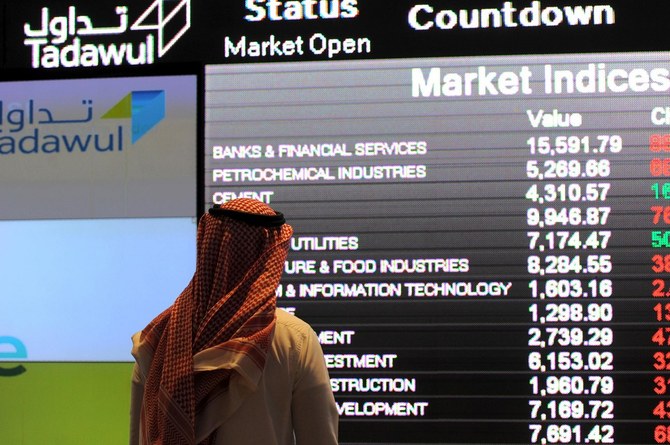
RIYADH: Saudi Arabia’s Tadawul All Share Index ended the week by gaining 6.68 points, or 0.05 percent, to close at 12,352.33 on Thursday.
The total trading turnover of the benchmark index was SR6.55 billion ($1.74 billion) as 120 stocks advanced, while 103 retreated.
The parallel market, Nomu, also gained 95.60 points, or 0.36 percent, to close the trading session at 26,457.81. This comes as 29 stocks advanced, while as many as 27 retreated.
On the other hand, the MSCI Tadawul Index slipped by 2.37 points, or 0.15 percent, to close at 1,547.20.
The best-performing stock on the benchmark index was Al-Baha Investment and Development Co., as its share price surged by 7.69 percent.
Other top performers included Raydan Food Co. and the Company for Cooperative Insurance, whose share prices soared by 7.29 percent and 6.63 percent, to stand at SR30.90 and SR160.80 respectively.
Electrical Industries Co. and the Mediterranean and Gulf Insurance and Reinsurance Co. also fared well during the last trading session of the week.
The worst performer was Saudi Chemical Co., whose share price dropped by 5.36 percent to SR7.77.
Power and Water Utility Co. for Jubail and Yanbu as well as the National Company for Glass Industries, underperformed as their share prices dropped by 5.22 percent and 4.82 percent to stand at SR63.50 and SR42.45, respectively.
On the announcements, Bank AlJazira announced its interim financial results for the period ending March 31 with net profit amounting to SR300.4 million compared to SR279.3 million in the previous quarter.
In an official statement on Tadawul, the bank attributed the increase in the net income to a decrease in total operating expenses by 6 percent.
“The decrease in total operating expenses is mainly due a decrease in net impairment charge for financing and other financial assets, other general and administrative expenses, salaries and employee-related expenses and other operating expenses against an increase in depreciation and amortization expenses,” the statement said.
Conversely, there has been a slight decrease of 0.2 percent in total operating income, primarily attributed to a reduction in net financing and investment gains. Additionally, the rise in net income was partially tempered by increased zakat charges over the period.
GCC central banks hold interest rates steady for 6th time following Fed’s move
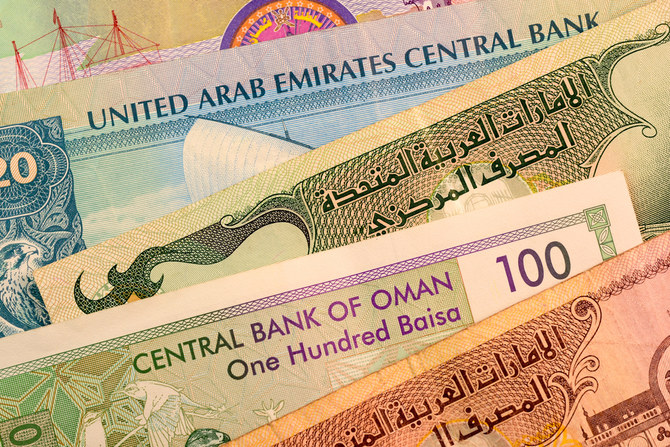
RIYADH: Gulf Cooperation Council central banks have held interest rates steady for the sixth time as the US Federal Reserve keeps its benchmark level between 5.25 percent and 5.50 percent.
As most currencies in the region are pegged to the US dollar, monetary policy follows the decisions taken in Washington, with policymakers opting to lock the rate at the level it has been since July.
The freeze comes as the rate-setting panel cites “a lack of further progress toward the committee’s 2 percent inflation objective.”
Vijay Valecha, chief investment officer at Century Financial, told Arab News: “This decision marks the sixth consecutive time that the central bank has chosen to keep rates unchanged. Market expectations have adjusted, now forecasting only one rate cut by year-end compared to the six anticipated at the beginning of 2024.”
He added: “The monetary policies of most central banks in the GCC countries, including the UAE, Saudi Arabia, Bahrain, Oman, and Qatar, typically mirror those of the Fed due to their currencies being pegged to the US dollar. Kuwait is the exception in the bloc, as its dinar is linked to a basket of currencies.”
Valecha continued by stating that as a result, interest rates in GCC markets are also anticipated to remain stable in the near future, which bodes well for the profitability of GCC banks.
This decision implies that the Saudi Central Bank, also known as SAMA, will maintain its repo rates at the current level of 6 percent.
The UAE central bank, along with Kuwait, Qatar, Oman, and Bahrain, also mirrored the Fed’s move.
Repo rates, which represent a form of short-term borrowing primarily involving government securities, underscore the close economic ties and financial dynamics between the GCC countries and the global economic landscape, particularly the US.
The US central bank also stated that it “does not expect it will be appropriate to reduce the target range until it has gained greater confidence that inflation is moving sustainably toward 2 percent.”
This indicates that rate cuts are not on the cards anytime soon, until inflation cools down and moves sustainably toward the 2 percent target set by the US Fed.




